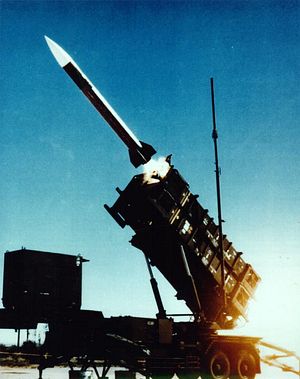With high procurement costs and training, maintenance, and upgrading costs, as well as their vulnerability on the ground, the burdens of operating fighter aircraft are increasingly heavy everywhere, including Southeast Asia. Surface-to-air missiles (SAMs) present an alternative means of air defense. Though several types of fourth generation fighters have been introduced into the region, most Southeast Asian air forces have only purchased a few squadrons of them since the end of the Cold War. Because of a ceiling of operational readiness and the broad air space of most regional countries, the limited sizes of these fighter fleets means they may not be able to respond to intruders or other contingencies all the time. Furthermore, those small fleets, usually concentrated in one or a few airbases, could be vulnerable to a pre-emptive strike, especially from an extra-regional power. Some countries such as Cambodia have even forsaken their fighter capability entirely due to financial concerns.
SAMs, with their lower costs in terms of facilities and manpower, would present a potential alternative to fighters. Without runways and other obvious infrastructure, SAMs are less likely to be paralyzed in a pre-emptive strike. Their compact shapes enable easy camouflage and protected in hardened shelters. In addition, SAMs also serve as an economic or asymmetrical method of neutralizing hostile aircraft, particularly for regional air forces with a limited margin for loss. Therefore, SAMs can take on some of the responsibilities of fighters and free these aircraft for other missions such as interception, escort, reconnaissance, and patrol over offshore territories. Moreover, proper integration of SAMs and fighters would form a synthetic network for air defense.
SAMs are not new to Southeast Asia. Back in the Vietnam War, North Vietnam received various Soviet systems, such as the S-75s and S-125s, along with thousands of missiles, forming a sophisticated air defense network to counter U.S. airpower. Similarly in the 1960s, British Bloodhounds and Soviet S-75 systems were respectively deployed in Singapore and Indonesia. In the 1980s and post-Cold War era, numerous SAMs, especially man-portable SAMs (MANPADs), were introduced into the region; parallel with SAMs, regional armed forces also obtained some kinds of anti-aircraft guns, which serve an auxiliary role. However, current Southeast Asian air defense capabilities could be seen as insufficient to supplement fighters.
Currently, most types of SAMs in the region are MANPADs, which only play a limited role at the tactical level. Although MANPADs in mujahideen hands reshaped the Afghanistan War against the Soviet Union in the 1980s, their short ranges mean they are unlikely to engage with high-altitude targets or counter most aerial standoff munitions. Short and mid-ranged SAMs, such as the British Rapier and Israeli Spyder systems, provide better protection for field troops and key facilities, but are still insufficient for defending large areas or targeting aircraft beyond 30 km. As for long-ranged SAMs, systems such as the Russian S-300 and S-400 systems, which cover of a radius of more than a hundred kilometers, were only owned by Vietnam in a small number. This kind of SAM would be most valuable in supplementing fighters due to their long ranges.
Generally, there is much room for Southeast Asian countries to develop their layered SAM defenses. Yet territorial coverage, political sensibility, and lack of flexibility are all major obstacles preventing Southeast Asian states from making a larger role for SAMs. Apart from the SAM systems themselves, integrating various sensors and units into a unified command chain would be another challenge for regional armed forces.
For regional countries with large territories, such as Indonesia, it is infeasible to build a comprehensive air defense net covering the majority of air space. Therefore, fighters are the mainstay of air defense and SAMs can only strengthen air defense in specific areas. Over-the-horizon detection capability also determines whether long-range SAMs are meaningful in a large air space. Apart from a few high mountains close to the coastlines for placing radars, SAMs in other locations would have to rely on aerial platforms such as air warning and command aircraft for complete aerial surveillance. These aerial platforms are themselves expensive assets, and they usually require fighter escorts during wartime.
For several small regional states, such as Singapore and Brunei, relying on SAM networks for air defense might be feasible. However, these SAMs’ range would extend into neighboring air space and consequently create political tension, which in turn may not benefit national security. For other regional states, deploying SAMs that can cover certain disputed territories may also be interpreted as a provocation.
Finally, as fighters are designed for multiple purposes, such as reconnaissance, interception of unidentified aircraft, and anti-ship and ground defense. SAMs are almost exclusively for a single mission: air defense. In peace time, fighters provide more flexibility than SAMs for military commanders, and perhaps political leaders, to make decisions. Technically, SAMs can only shoot their targets, without any option of lower intensity engagement.
On account of those pros and cons, SAMs may not be a major subject for the regional military build-ups. However, if the regional situation is continuously declining, SAMs — particularly MANPADs and short-ranged systems — are a faster and more economic method than fighters for regional states to strengthen their defenses, in particular against a superior enemy. In other words, SAMs could be a useful indicator of Southeast Asian countries’ perceptions of external threats.
Shangsu Wu is a research fellow in the Military Studies Program of the S. Rajaratnam School of International Studies (RSIS), Nanyang Technological University.

































